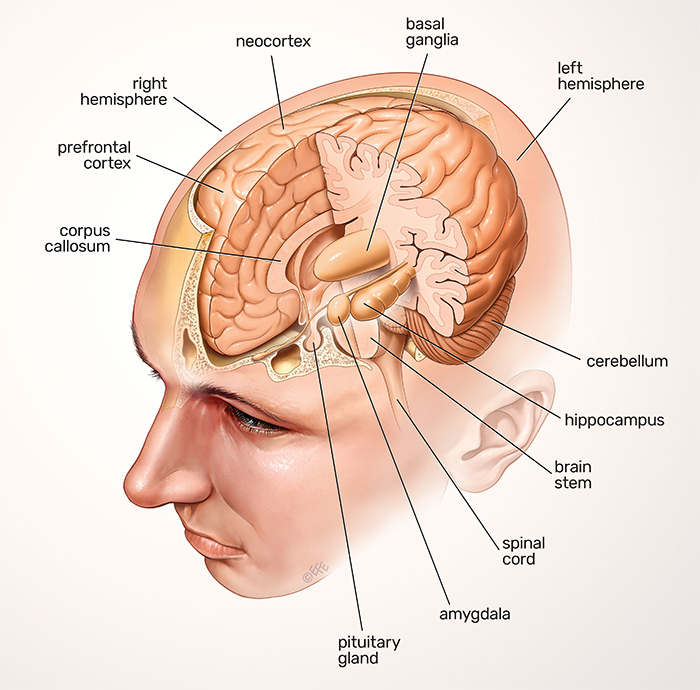The forebrain

Image credit: Levent Efe
By far the largest region of your brain is the forebrain (derived from the developmental prosencephalon), which contains the entire cerebrum and several structures directly nestled within it - the thalamus, hypothalamus, the pineal gland and the limbic system.
Cerebrum and the cerebral cortex
When you picture the iconic shape of the human brain, the majority of what’s visible is the cerebrum with its wrinkly, pinkish-grey outer appearance. It makes up around 85% of the brain and consists primarily of grey matter, divided into two hemispheres.
The cerebrum is where most of the important brain functions happen, such as thinking, planning, reasoning, language processing, and interpreting and processing inputs from our senses, such as vision, touch, hearing, taste and smell.
The outer layer of the cerebrum is called the cerebral cortex, and in each hemisphere it is traditionally divided into four lobes - frontal, parietal, occipital and temporal. Communications between the two hemispheres are maintained by a fibrous bridge called the corpus callosum, which is formed in utero.
Beneath the surface of the hemispheres are large knots of neurons called basal ganglia, which specialise in programming and executing our motor functions. When basal ganglia are affected by diseases such as Parkinson’s, patients have tremors and uncontrolled movements.
Control centres for making sense of our bodies
Apart from the cerebrum, the forebrain also contains several small, but highly important structures located towards the centre of the brain and are included in the limbic system. Collectively these are called the diencephalon and they are involved in regulating things like the body’s sensory perception, motor functions, and hormones.
The thalamus consists of two lobes of grey matter tucked away right under the cerebral cortex. It is a prime processing centre for sensory information, as it links up the relevant parts of the cerebral cortex with the spinal cord and other areas of the brain important for our senses. The thalamus also controls sleep.
The hypothalamus is quite small, only about the size of an almond. As its name suggests, it can be found right underneath the thalamus, and despite its small size it is actually the major control centre of the autonomic motor system. It is involved in some hormonal activity and connects the hormonal and nervous systems. The hypothalamus also works to regulate things like our blood pressure, body temperature, and overall homeostasis.
The pineal gland is even smaller than the hypothalamus - only about the length of a grain of rice - and is tucked between the two lobes of the thalamus. It is actually shaped like a tiny pinecone, and its main job is to produce the hormone melatonin, which regulates our sleep-wake cycles. Just like the hypothalamus, it is also involved in regulating hormonal functions.
